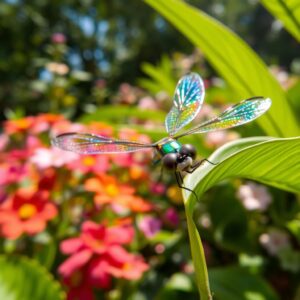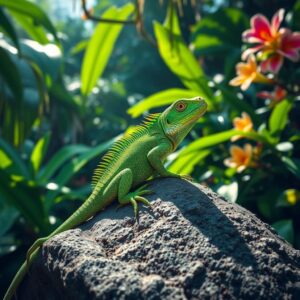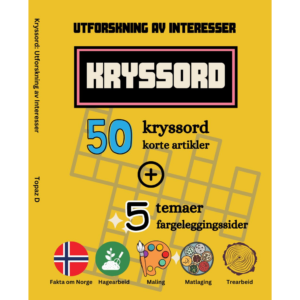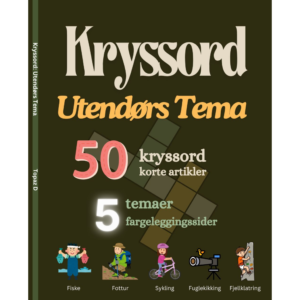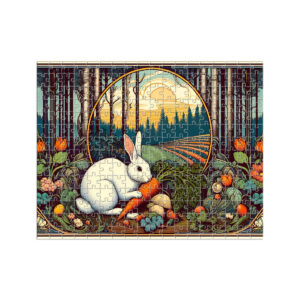
Explore & Play
Discover interesting topics and solve the accompanying crossword puzzle.
Livestock Crossword | History and evolution of domesticated animals
Table of Contents
Livestock Crossword
You can either fill in the crossword puzzle directly on this page or click the button in the bottom right corner to print it for free.
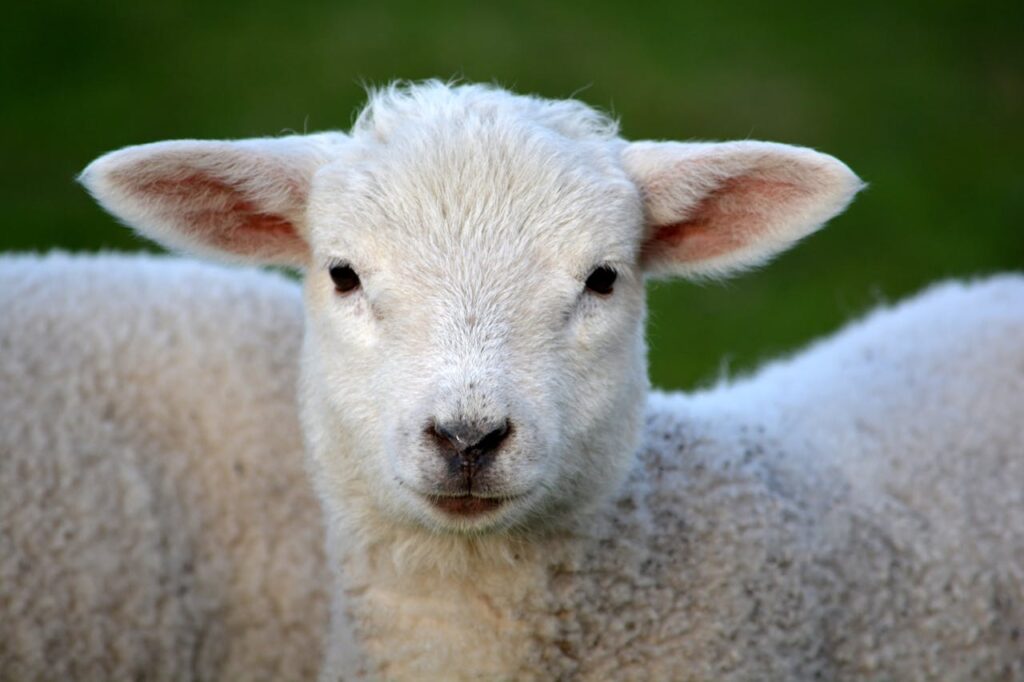
The History of Domesticated Animals: From Wild to Farm
Domestication of animals has shaped agriculture for thousands of years, transforming wild species into reliable sources of food, labor, and companionship. From the early days of human civilization, domesticated animals have been indispensable to farming and survival. This process, which began with the taming of wild animals, gradually evolved into specialized practices that provided society with a wide range of benefits. In this article, we’ll explore the fascinating journey of domesticated animals, from their wild origins to their current roles on farms and in homes around the world.
1. Early Domestication: From Wild Creatures to Farm Animals
The history of domesticated animals begins long before the establishment of modern agriculture. Early human societies were primarily hunters and gatherers, living off wild animals and foraged plants. However, as human populations grew and societies began to settle, the need for a more stable and reliable food source became essential. This led to the gradual process of domestication, where humans started to tame and breed wild creatures to live alongside them, turning them into farm animals.
The domestication of animals likely started with species that were already living in close proximity to human settlements, such as wild goats, sheep, and pigs. These early domesticated animals were not tamed overnight but rather through a gradual process that took thousands of years. Animals were selected for traits that were beneficial to human survival, such as docility, the ability to breed in captivity, and the production of food resources like milk, meat, and wool.
For instance, wild sheep were originally wild and aggressive creatures, but over time, through selective breeding, humans were able to create more docile sheep that were easy to manage and provided valuable resources like wool and meat. Similarly, wild goats, which were naturally inclined to roam in herds, were domesticated for their milk, meat, and hair.
The process of domestication allowed humans to settle down, form agricultural societies, and establish a sustainable food supply. These early farm animals were crucial to the development of civilizations, providing not only food but also tools, clothing, and materials for building. As early human communities began to shift from a nomadic lifestyle to a settled one, the domestication of animals became an essential part of their survival.
2. The Evolution of Livestock Breeding
As agriculture advanced, so did the practice of selective breeding. Early humans did not understand genetics, but they instinctively began to breed livestock for specific traits that would be beneficial to them. Over time, this led to the evolution of different breeds and varieties of domesticated animals.
Selective breeding became more sophisticated with the advent of organized agriculture and the development of breeding practices. The goal of livestock breeding was to improve the quality and quantity of products such as meat, milk, wool, and eggs, and to enhance traits like strength, speed, and fertility.
In cattle, for example, early farmers selectively bred animals that produced more milk or grew faster to meet the demands of an expanding human population. Over time, specialized breeds of cattle emerged, such as dairy breeds like Holstein and beef breeds like Angus. These breeds were developed to suit specific agricultural needs, whether for high milk production or fast growth for meat.
Similarly, in pigs and sheep, humans selectively bred animals for specific traits. The domestic pig evolved from the wild boar, with selective breeding for faster growth, better meat quality, and improved disease resistance. Sheep, initially bred for wool, were later bred for meat production, leading to the development of meatier, faster-growing breeds.
The evolution of livestock breeding did not only focus on physical traits, but also on the development of animals that could adapt to different climates and farming systems. For example, certain breeds of cattle and sheep were developed to thrive in specific geographical regions, such as the hardy Scottish Highland cattle that can survive in cold, mountainous environments.
Livestock breeding became increasingly complex over time, with more scientific approaches taking center stage in the 19th and 20th centuries. Today, advances in genetics have enabled farmers to selectively breed animals with greater precision, improving productivity and ensuring that livestock are more resistant to diseases and environmental stresses.
3. Domestication of Poultry: The Rise of Chickens, Ducks, and Turkeys
The domestication of poultry was another significant step in the evolution of farm animals. While early human societies relied on large animals such as cattle, sheep, and goats for food, poultry became an important source of protein in the form of eggs and meat. Unlike larger livestock, poultry could be raised in smaller spaces, making them ideal for early farmers and smallholders.
The domestication of poultry is thought to have begun with wild species in Asia. The domesticated chicken (Gallus gallus) is believed to have been derived from the red junglefowl, which was native to Southeast Asia. Early farmers selectively bred these wild birds for traits like size, egg production, and docility. Over time, chickens became a staple in agricultural societies around the world, providing a reliable source of eggs and meat.
Chickens were among the first poultry to be domesticated, but ducks and turkeys followed soon after. Ducks were domesticated from wild species like the mallard, with domesticated ducks becoming popular for their eggs, meat, and feathers. Like chickens, ducks were adaptable and easy to raise in small flocks, making them an essential part of farming operations.
Turkeys, on the other hand, were domesticated in North America. Native Americans had domesticated wild turkeys long before European settlers arrived on the continent. After European colonization, turkeys were introduced to Europe, where they became a popular source of meat for special occasions and festivals.
The domestication of poultry significantly changed the food supply for human societies. Chickens, ducks, and turkeys were not only easier to raise in smaller spaces, but they also reproduced more quickly, allowing for a steady and sustainable food source. The domestication of these birds marked a turning point in human history, allowing for greater food security and the growth of agriculture.
Today, poultry farming is one of the most widespread forms of animal husbandry worldwide, with chickens being the most commonly raised farm animal. Advancements in breeding and farming practices have made poultry production more efficient, ensuring that these birds continue to play a vital role in feeding the global population.
4. The Impact of Horses and Other Draft Animals
Horses have played a monumental role in the development of human civilization, particularly in the context of agriculture. Their domestication revolutionized transportation, agriculture, and warfare, making them one of the most significant draft animals in history.
The domestication of the horse is believed to have occurred around 5,500 years ago in the steppes of Central Asia, particularly modern-day Kazakhstan. Initially used for their milk and meat, horses eventually became indispensable in agriculture as draft animals. Unlike oxen, which were often slow-moving and required more space, horses offered greater speed, agility, and stamina, making them ideal for pulling plows, carts, and other heavy agricultural equipment.
The use of horses as draft animals transformed farming practices. Their ability to pull heavier loads for longer distances with greater efficiency enabled farmers to cultivate larger areas of land. Before the advent of mechanized farming equipment, horses were crucial for planting and harvesting crops, as well as transporting goods to market. With their increased productivity, horses allowed farmers to expand their operations and provided a reliable source of labor.
In addition to horses, other draft animals such as oxen, mules, and donkeys also played essential roles in early agriculture. Oxen were commonly used in many regions for their strength and endurance, often paired with horses or mules to form teams for plowing. Mules, the offspring of a horse and a donkey, were especially valued for their strength, surefootedness, and ability to work in rugged terrain, making them indispensable in mountainous farming areas.
The domestication and use of draft animals helped human societies transition from subsistence farming to more specialized agricultural practices, leading to increased food production and the growth of economies. As a result, societies were able to support larger populations, which ultimately spurred the development of cities, trade, and industry. In modern agriculture, while tractors and other machinery have replaced draft animals in many parts of the world, horses, mules, and oxen continue to be used in certain regions, particularly for small-scale farming and traditional practices.
5. Raising Specialty Livestock: From Alpacas to Llamas
Specialty livestock farming has become a growing niche within the agricultural industry, as farmers and breeders focus on raising non-traditional livestock species for various purposes such as fiber production, meat, and even companionship. Among the most popular specialty livestock are alpacas and llamas, two animals native to South America that have been domesticated for thousands of years by indigenous peoples of the Andes.
Alpacas (Vicugna pacos) and llamas (Lama glama) are closely related species, both belonging to the camelid family, but they serve different roles in the communities that raise them. Alpacas are primarily bred for their soft, luxurious fiber, which is highly prized in the textile industry for making high-quality garments. Alpacas have been domesticated for their wool for over 6,000 years, and their fleece, which comes in a wide range of colors, is renowned for being both lightweight and incredibly warm. Today, alpacas are raised worldwide, especially in the United States, Canada, and Australia, where they are valued for their gentle temperament and easy care.
Llamas, on the other hand, are primarily raised for their meat, fiber, and as pack animals. They have been used for centuries by Andean cultures as beasts of burden, capable of carrying loads over long distances in high-altitude environments. While llamas are larger and stronger than alpacas, they produce a coarser fiber that is not as highly sought after in the textile industry. However, llamas are still valued for their ability to carry heavy loads in mountainous terrains, making them ideal for trekking and other forms of transportation in remote regions.
In addition to alpacas and llamas, other specialty livestock species are being raised for their unique qualities. For example, the production of cashmere from goats is a lucrative industry, with farmers selectively breeding goats to produce the fine undercoat that is used in luxury textiles. Additionally, farmers are increasingly turning to specialty breeds of sheep, such as the Jacob sheep, known for its distinctive wool pattern, or the rare breeds of pigs raised for their unique meat quality, such as the Iberian pig, which produces the world-renowned jamón ibérico.
Specialty livestock farming has allowed farmers to diversify their operations, creating new revenue streams and expanding markets for unique animal products. The global demand for high-quality fibers and meats, particularly in niche markets, continues to grow. As this industry evolves, farmers are also increasingly focused on sustainability, practicing ethical breeding and ensuring that the welfare of these animals is prioritized in all stages of production.
6. The Role of Livestock in the Development of Modern Agriculture
Livestock has been integral to the development of modern agriculture, not only providing food and resources but also playing key roles in enhancing the productivity of farming systems. The domestication of animals allowed agricultural societies to become more efficient, supporting larger populations and facilitating the growth of cities and economies.
One of the primary contributions of livestock to modern agriculture is their role in soil fertility. For thousands of years, animals such as cattle, sheep, and poultry have been used to produce manure, which is an essential component of organic fertilizers. Manure provides valuable nutrients like nitrogen, phosphorus, and potassium that are necessary for plant growth. As industrial agriculture developed, the use of chemical fertilizers became more widespread, but manure remains a critical component in organic farming systems and sustainable agricultural practices today.
Livestock has also been essential for the production of energy. In addition to being draft animals, as discussed earlier, livestock has historically been used to provide power for a range of farming activities. Horses, oxen, and other animals were used to turn mills, grind grain, and pump water, reducing the reliance on human labor and increasing farm productivity.
Furthermore, livestock is central to crop production in integrated farming systems, where animals and crops are raised in complementary ways. For example, animals such as pigs, chickens, and cattle can graze on crop residues, helping to clear fields while also producing manure that enriches the soil. This symbiotic relationship between livestock and crops helps to maintain a balanced, sustainable farming system and reduces the need for external inputs like synthetic fertilizers.
The importance of livestock in modern agriculture is not limited to crop farming alone. Livestock products such as milk, meat, eggs, and wool are vital sources of nutrition and income for millions of people worldwide. The dairy industry, in particular, has played a major role in providing a steady source of calcium and protein to populations, with dairy cattle being raised for both their milk and their ability to provide labor in some regions.
Additionally, the development of industrial-scale livestock farming in the 20th century has led to major advancements in animal husbandry practices. Innovations in breeding, nutrition, veterinary care, and livestock management have increased the efficiency of meat, milk, and egg production, helping to meet the demands of a growing global population. At the same time, there is growing recognition of the environmental and ethical challenges posed by large-scale livestock farming, leading to a push for more sustainable and humane practices in the industry.
Livestock farming continues to evolve, with advancements in technology and research driving the development of new breeds, more efficient farming methods, and sustainable practices. As the world continues to face challenges like climate change, food security, and population growth, the role of livestock in modern agriculture will remain a cornerstone of global food systems.
7. The Continuing Legacy of Domesticated Animals
Livestock and Technological Advancements
Today, new technologies continue to improve the breeding, care, and management of livestock, ensuring that these animals are more productive than ever. Artificial insemination, genetic mapping, and advancements in animal nutrition have all contributed to healthier, more efficient livestock populations. Additionally, precision farming techniques have enabled farmers to monitor the health and well-being of their animals in real-time, ensuring optimal care.
Animal Companions: From Farm to Home
Many domesticated animals, like cats and dogs, have moved beyond the farm, becoming cherished companions in homes around the world. These animals, which were once essential for guarding crops or herding livestock, have adapted to life alongside humans as pets. In many ways, they represent the full circle of domestication—animals that were initially tamed for utility, now cherished for companionship.
Wrapping Up the Story of Domesticated Animals
The journey from wild to farmed animals has shaped not only agriculture but also human history, highlighting the deep bond between species and the advancements of civilizations. From cattle and sheep to llamas and rabbits, domesticated animals have provided essential resources that allowed human societies to flourish. As we look to the future, it’s clear that domesticated animals will continue to play an integral role in feeding, clothing, and supporting humanity.
Share to...
I hope you enjoy the content.
Want to receive our daily crossword puzzle or article? Subscribe!
You may also be interested in
Share to…
Want to receive our daily crossword puzzle?
-
Jigsaw Puzzles
Whimsical Garden Cat Jigsaw Puzzle 250 | 300 | 500 Pieces
kr 348,00 – kr 439,00Price range: kr 348,00 through kr 439,00 Select options This product has multiple variants. The options may be chosen on the product page -
Jigsaw Puzzles
Enchanting Four Sheep Zodiac Jigsaw Puzzle 250 | 300 | 500 Pieces
kr 348,00 – kr 439,00Price range: kr 348,00 through kr 439,00 Select options This product has multiple variants. The options may be chosen on the product page -
Jigsaw Puzzles
Art Nouveau Puzzle – White Rabbit in a Whimsical Garden 250 | 300 | 500 Pieces
kr 348,00 – kr 439,00Price range: kr 348,00 through kr 439,00 Select options This product has multiple variants. The options may be chosen on the product page
